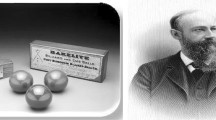Abstract
Poly(3-hydroxybutyrate) [P(3HB)] test-pieces prepared from the polymer produced by Azotobacter chroococcum were degraded in natural environments like soil, water, compost and sewage sludge incubated under laboratory conditions. Degradation in terms of % weight loss of the polymer was maximum (45%) in sewage sludge after 200 days of incubation at 30°C. The P(3HB)-degrading bacterial cultures (36) isolated from degraded test-pieces showed different degrees of degradation in polymer overlayer method. The extent of P(3HB) degradation increases up to 12 days of incubation and was maximum at 30°C for majority of the cultures. For most efficient cultures the optimum concentration of P(3HB) for degradation was 0.3% (w/v). Supplementation of soluble carbon sources like glucose, fructose and arabinose reduced the degradation while it was almost unaffected with lactose. Though the cultures degraded P(3HB) significantly, they were comparatively less efficient in utilizing copolymer of 3-hydroxybutyrate and 3-hydroxyvalerate [P(3HB-co-3HV)].
Similar content being viewed by others
References
Brandl H, Gross RA, Lenz RW & Fuller RC (1990) Plastic frombacteria and for bacteria: poly(β-hydroxyalkanoates) as natural, biocompatible and biodegradable polyesters. Adv. Biochem.Eng. Biotechnol.41:77–93
Brandl H & Püchner P (1992) Biodegradation of plastic bottlesmade from “Biopol” in an aquatic ecosystem under in situconditions. Biodegradation2:237–243
Briese BH, Jendrossek D & Schlegel HG (1994) Degradationof poly(3–hydroxybutyrate-co-3–hydroxyvalerate) by aerobicsewage sludge. FEMS Microbial. Lett.117:101–111
Chowdhury AA (1963) Poly-β-hydroxybuttersäure abbauende Bakterienund Exoenzym. Arch. Microbiol.47:167–200
Delafield FP, Doudoroff N, Palleroni NJ, Lusty J & Contopoulos R(1965) Decomposition of polyβ-hydroxybutyrate by Pseudomonas. J. Bacteriol.90:1455–1466
Doi Y (1990) Microbial polyesters. VCH Publishers, New York
Doi Y, Kanesawa Y & Tanahashi N (1992) Biodegradation of microbialpolyesters in the marine environments. Polym. Degrad.Stab.36:173–177
Gilmore DF, Antoun S, Lenz RW, Goodwin S, Austin R & FullerRC (1992) The fate of “biodegradable” plastics in municipal leafcompost. J. Ind. Microbiol.10:199–206
Holland SJ, Jolly AM, Yasin N & Tighe BJ (1987) Polymers forbiodegradable medical devices. Biomaterials8:289–295
Jendrossek D, Knoke I, Habibian RH, Steinbuchel A & Schlegel HG (1993) Degradation of poly(3–hydroxybutyrate), PHB,by bacteria and purification of a novel PHB depolymerase of Comamonas sp. J. Environ. Polym. Degrad.1:53–63
Jendrossek D, Schirmer A & Schlegel HG (1996) Biodegradationof polyhydroxyalkanoic acids. Appl. Microbiol. Biotechnol. 46:451–463
Kimura M, Toyota K, Iwatsuki N & Sawada H (1994) Effectsof soil conditions on biodegradation of plastics and responsible microorganisms. In: Doi Y & Fukada K (Eds) Biodegradableplastics and polymers, (pp 92–106). Elsevier, Amsterdam, London, New York, Tokyo
Klingbeil B, Kroppenstedt R & Jendrossek D (1996) Taxonomicalidentification of Streptomyces exfoliatus K10 and characterizationof its poly(3–hydroxybutyrate) depolymerase gene. FEMSMicrobial. Lett.142:215–221
Malik KA & Claus D (1978) A method for the demonstration of extracellular hydrolysis of poly-β-hydroxybutyrate. J. Appl.Bacteriol.45:143–146
Manna A, Giri P & Paul AK (1999) Degradation of poly(3–hydroxybutyrate) by soil streptomycetes. W. J. Microbiol. Biotechnol.15: 705–709
Matavulj N & Molitoris HP (1992) Fungal degradation ofpolyhydroxy-alkanoates and a semiquantitative assay for screeningtheir degradation by terrestrial fungi. FEMS Microbiol. Rev.103: 323–332
Matavulj M, Moss ST & Molitoris HP (1993) Degradation of poly-β-hydroxyalkanoate based plastics in natural environments. In:Schlegel HG & Steinbuchel A (Eds) Proceedings of the InternationalSymposium on Bacterial Polyhydroxyalkanoates (pp465–466)
McLellan DW & Halling PJ (1988) Acid-tolerant poly(3–hydroxybutyrate) hydrolases from moulds. FEMS Microbiol.Lett.52:215–218
Mergaert J, Anderson C, Wouters A, Swings J & Kersters K (1992)Biodegradation of polyhydroxyalkanoates. FEMS Microbiol.Rev.103:317–322
Mergaert J, Webb A, Anderson C, Wouters A & Swings J (1993)Microbial degradation of poly(3–hydroxybutyrate) and poly(3–hydroxybutyrate-co-3–hydroxyvalerate) in soils. Appl. Environ.Microbiol.59:3233–3238
Mergaert J, Anderson C, Wouters A & Swings J (1994) Microbialdegradation of poly(3–hydroxybutyrate) and poly(3–hydroxybutyrate-co-3–hydroxyvalerate) in compost. J. Environ.Polym. Degrad.2:177–183
Mergaert J, Wouters A & Swings J (1994) Estimation of the intrinsicbiodiversity among poly(3–hydroxyalkanoates) degrading streptomycetesusing gas chromatographic analysis of fatty acids. Syst. Appl. Microbiol.17:601–612
Mergaert J, Wouters A, Anderson C & Swings J (1995) Insitu biodegradation of poly(3–hydroxybutyrate) and poly(3–hydroxybutyrate-co-3–hydroxyvalerate) in natural waters. Can. J. Microbiol. 41(Suppl 1): 154–159
Miller ND & Williams DF (1987) On the biodegradationof poly-β-hydroxybutyrate (PHB) homopolymer and poly-β-hydroxybutyrate-hydroxyvalerate copolymers. Biomaterials 8:129–137
Müller B & Jendrossek D (1993) Purification and properties ofpoly(3–hydroxyvaleric acid) depolymerase from Pseudomonaslemoignei. Appl. Microbiol. Biotechnol.38:487–492
Nakayama K, Saito K, Fukui T, Shirakura Y & Tomita K(1985) Purification and properties of extracellular poly(3–hydroxybutyrate) depolymerases from Pseudomonas lemoignei. Biochem. Biophys. Acta827:63–72
Nojima S, Mineki S & Iida M (1996) Purification and characterizationof extracellular poly(3–hydroxybutyrate)-depolymerasesproduced by Agrobacterium sp K-03. J. Ferment. Bioeng. 81:72–75
Pagga U, Beimborn DB, Boelens J& De Wilde B (1995) Determinationof the aerobic biodegradability of polymeric materialin a laboratory controlled composting test. Chemosphere 31:4475–4487
Pal S, Manna A & Paul AK (1998) Nutritional and cultural conditionsfor production of poly-3–hydroxybutyric acid by Azotobacterchroococcum. Folia Microbiol.43:177–181
Schirmer A, Jendrossek D & Schlegel HG (1993) Degradation ofpoly(3–hydroxyoctanoic acid) [P(3HO)] by bacteria: purificationand properties of a P(3HO) depolymerase from Pseudomonasfluorescens GK13. Appl. Environ. Microbiol.59:1220–1227
Shirakura Y, Fukui T, Tanio T, Nakayema K, Matsuno R & Tomita K (1983) An extracellular D(-)3–hydroxybutyrate oligomer hydrolasefrom Alcaligenes faecalis. Biochem. Biophys. Acta 748:331–339
Shirakura Y, Fukui T, Saito T, Okamoto Y, Narikawa T, Koide K, Tomita K, Takemasa T & Massamune S (1986) Degradationof poly(3–hydroxybutyrate) by depolymerase from Alcaligenesfaecalis T1. Biochem. Biophys. Acta880:46–53
Steinbüchel A (1991) Polyhydroxyalkanoic acids. In: Byrom D (Ed) Biomaterials (pp 123–213). Macmillan, Basingstoke, London
Tanio T, Fukui T, Shirakura Y, Saito T, Tomita K & Kaiho T(1982) An extracellular poly(3–hydroxybutyrate) depolymerase from Alcaligenes faecalis. Eur. J. Biochem.124:71–77
Yamada K, Mukai K & Doi Y (1993) Enzymatic degradation of poly(hydroxyalkanoates) by Pseudomonas pickettii. Int. J. Biol.Macromol.15:215–220
Author information
Authors and Affiliations
Rights and permissions
About this article
Cite this article
Manna, A., Paul, A. Degradation of microbial polyester poly(3-hydroxybutyrate) in environmental samples and in culture. Biodegradation 11, 323–329 (2000). https://doi.org/10.1023/A:1011162624704
Issue Date:
DOI: https://doi.org/10.1023/A:1011162624704




